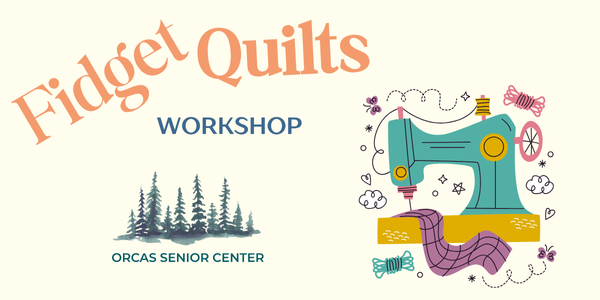— Orcasional Musings by Steve Henigson —

When what we now politically correctly call “settlers of European descent” first descended upon Orcas and settled, the island was thickly covered, shore to shore, with trees. There were firs, hemlocks, maples, oaks, and lots and lots of fragrant, beautiful cedars. But the settlers had to farm to keep themselves alive, so the trees started coming down.
And that brought up a question: “What do we do with all this wood?”
Besides having land and trees, Orcas was also studded with huge outcroppings of limestone. The fast growing city of Seattle needed huge quantities of cement, and, wouldn’t you know it, cement is made from limestone. So Orcas Island’s first major industry was born, as some of the more enterprising settlers built kilns and burned limestone to produce lime for Seattle’s cement. This serendipitously also solved the problem of all that excess wood.
The trouble was, Seattle still needed huge quantities of lime, and Orcas still had huge quantities of limestone. Soon, the excess wood that had been cut down to open up farmland was all gone, but the demand for lime was still growing. Each lime kiln burnt four cords of wood every day, so cutting wood became profitable work; it was back-breaking, but profitable. Whole forests of gigantic old-growth trees that had been alive before Columbus discovered America fell to the woodsmen’s axes.
It didn’t take long for the old trees to come down and burn up. Soon, old trees could only be found on slopes so steep that logging them was impossible. Wood is, however, a renewable resource. New trees sprang forth where once the old trees had been. But then they got cut down, too.
After a while there was no longer any tree large enough to fell and burn. Most of the island was covered with farm crops, scrub, and puny seedlings. It had been shaved bald!
The last lime kiln on Orcas closed in the 1930s, for lack of wood to burn. That gave the trees some breathing space, and they could grow back undisturbed. Forests reestablished themselves, and the trees thrived, tall and thick. A woman who had spent her childhood as an Orcasian, and who had moved to the mainland for one reason or another, returned in the 1950s, looked around and saw the re-grown forests, and said in dismay, “Why’d you let all them trees grow back? Now you can’t see anything!”
A restored lime kiln has been opened, to slake your curiosity, with occasional lime-making demonstrations. It sits at the foot of what is still a huge outcropping of limestone in the Judd Cove Preserve. There’s a short trail from a small parking lot down Fowler’s Way, to the east of what used to be Horseshoe Highway, now signposted as Orcas Road. The last old-growth forest on the island is rumored to be in Moran Park, on the slopes of Mount Pickett, but getting there may require a special-use permit.
**If you are reading theOrcasonian for free, thank your fellow islanders. If you would like to support theOrcasonian CLICK HERE to set your modestly-priced, voluntary subscription. Otherwise, no worries; we’re happy to share with you.**








Interesting and entertaining bit of history, Steve; thanks! Seems the vacation rental industry and thoughtless zoning driven by profit is “shaving the island bald” again – especially in the UGAs. The ONE forested wetland and its creek that was worth saving is degraded within an inch of its life. Its soil is Mukilteo muck, which liquefies in a major earthquake. EAstsound UGA’s shorelines, North and South, are major sources of eelgrass/herring spawn habitat.. herring feed the salmon, salmon feed the starving orcas…
But…
humanity continues to make dumb decisions based solely on economics and profit for the land pimps, so, “shave ’em bald!” seems to be the M.O. around here, as evidenced by the “road improvements” driven by state grants and the sound of bulldozers day and night… Only now we’re “farming” vacay rentals in the one place supoosed to hold over half of our year-round population. Dumb decisions continue to abound, and confound. But hey, we can just run a fracked gas line under the Salish Sea and go back to limestone-making a la gas-fired limekilns!
Nicely told, Steve – thanks.
When we walk past moldering old giant stumps with the springboard slots still visible, I think of all that beautiful clear, vertical grain stuff tossed into the kiln fireboxes. Sobering – we haven’t changed very much at all.